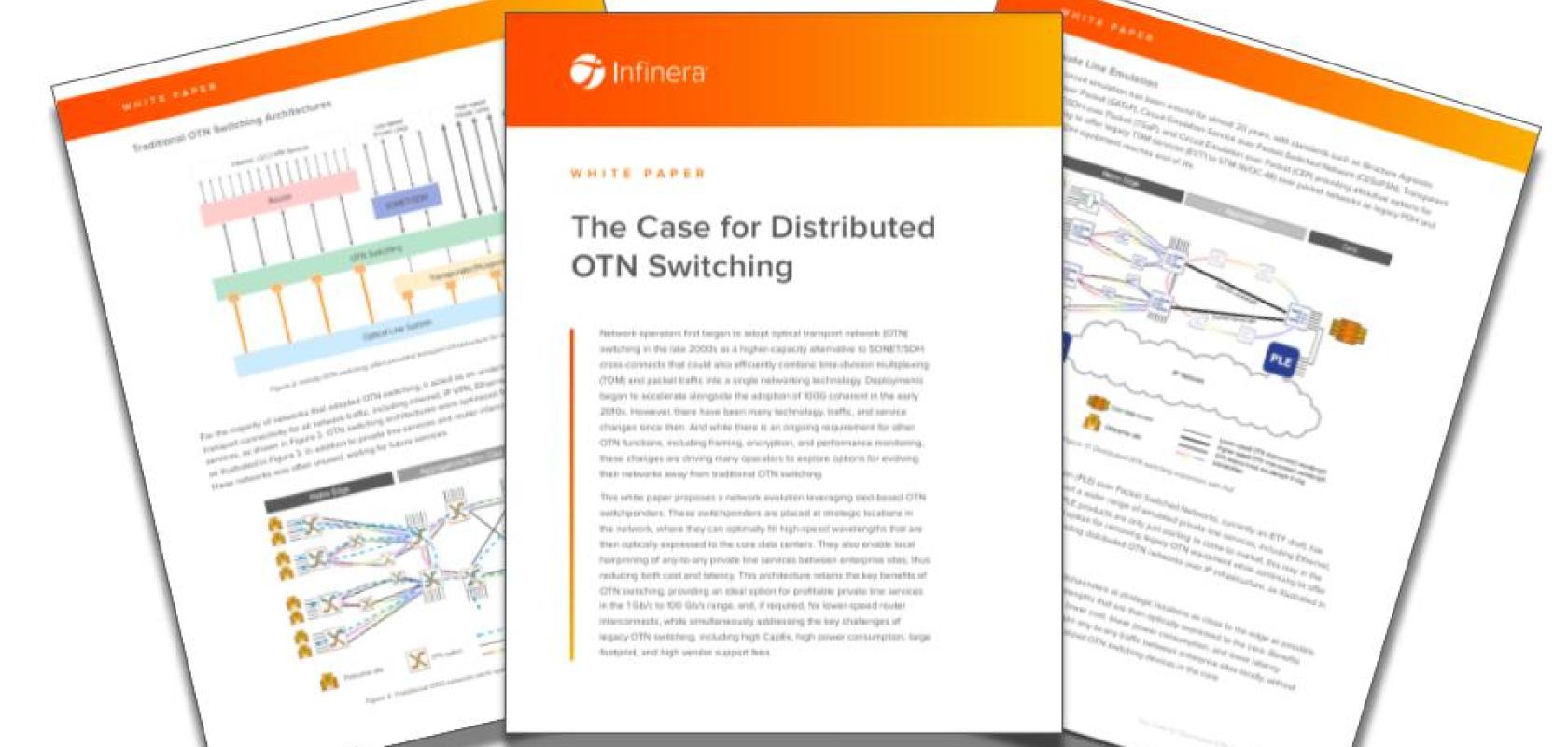Presenting the case for distributed OTN switching

The case for distributed OTN switching: An Infinera White Paper
This White Paper details the evolution of optical transport network (OTN) switching, tracing its history from the late 2000s as an alternative to SONET/SDH cross-connects to its current state.
Initially embraced by network operators looking for higher-capacity solutions capable of seamlessly integrating time-division multiplexing (TDM) and packet traffic, OTN switching held promise for optimising network efficiency. However, as technology, traffic patterns, and service demands have evolved, traditional OTN switching has encountered various challenges prompting the exploration of alternative network architectures.
Enter the concept of distributed OTN switching, the focus of this White Paper's proposal. Unlike conventional centralised OTN architectures, distributed OTN switching advocates for the strategic deployment of sled-based OTN switchponders at key locations within the network, which serve as agile units optimising high-speed wavelengths and facilitating localised hairpinning of any-to-any private line services between enterprise sites.
Who should read this White Paper?
Optical communications professionals responsible for the design, deployment, and maintenance of optical transport networks within network operator and communication service provider (CSP) businesses. If you’re a CEO, CTO, Head of Engineering, System Architect or anyone involved in optical transport networks who wants to find out more about new advances in architectures should register to download this White Paper.
Why download this White Paper?
This White Paper details the advantages of distributed OTN switching over traditional architectures. It emphasises the architecture's capacity to address the perennial challenges of legacy OTN systems, including high capital expenditure (CapEx), elevated power consumption, substantial footprint, and vendor support fees. F
By providing a detailed examination of the technological and operational shifts within the telecommunications landscape, the White Paper underscores the pressing need for adaptive network solutions capable of accommodating evolving demands.
It also demonstrates the benefits of distributed OTN switching, such as enhanced cost-effectiveness, reduced power consumption, and streamlined network operations. Through detailed analysis and real-world examples, readers gain valuable insights into the operational efficiencies and economic advantages that distributed OTN architectures offer.

